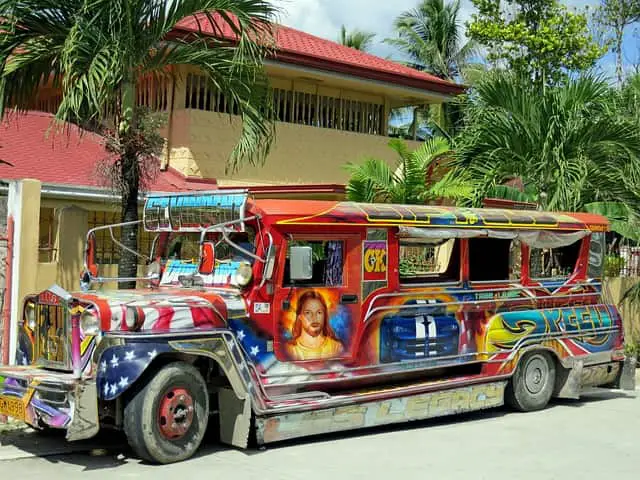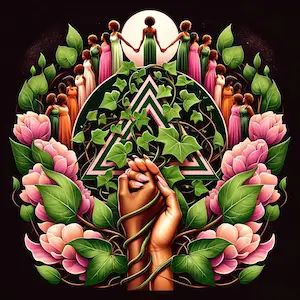Tagalog chants, an integral part of Filipino culture, have been passed down through generations, preserving stories, values, and traditions. These melodious and rhythmic verses are much more than just simple expressions; they provide a glimpse into the rich history, diverse language, and the unique customs of the Philippines.
In this article, we will explore the fascinating world of Tagalog chants, delving into their origins, significance, and the various regional variations that exist. We’ll also present 20 notable examples of these enchanting chants, translated into English, to showcase the beauty and depth of Filipino culture.

Table of Contents
Tagalog Chants: A Rich Cultural Heritage
Tagalog chants are an essential part of Filipino culture, reflecting the country’s history, values, and traditions. They are rooted in the Philippines’ oral traditions and have been passed down from generation to generation. This article delves into the significance of Tagalog chants, the different types, common themes, and their modern interpretations and adaptations.
The Importance of Chants in Filipino Culture
Chants hold a special place in the hearts of the Filipino people. They serve as a means of preserving cultural identity, connecting with ancestors, and understanding the country’s history. Chants are also an integral part of various ceremonies, rituals, and celebrations, adding a layer of depth and meaning to these events.
History of Tagalog Chants
Pre-colonial Era
Before the arrival of the Spaniards in the Philippines, the Tagalog people had a rich oral tradition, including chants, that served as a means of communication, storytelling, and preservation of their cultural identity.
Spanish Colonial Era
The Spanish colonial period witnessed a transformation in Tagalog chants. Spanish friars introduced Christianity, and local chanters adapted their repertoire to include Christian themes and stories.
Modern Era
In recent years, there has been a resurgence of interest in preserving and promoting Tagalog chants. Various cultural organizations, artists, and academics are working to keep this tradition alive and relevant in the modern world.
Types of Tagalog Chants
There are several types of Tagalog chants, each with its distinct purpose, style, and characteristics. Some of the most notable types are:
Harana
Harana is a traditional form of serenade, often performed by a man to woo a woman. It typically features sweet, romantic lyrics accompanied by a guitar.
Kundiman
Kundiman is a genre of traditional Filipino love songs characterized by its slow and sentimental melodies. It is often considered the quintessential form of Filipino romantic expression.
Balitaw
Balitaw is a traditional courtship dance and song, typically performed in a playful and flirtatious manner. The lyrics often involve a witty exchange between a man and a woman.
Dalit
Dalit refers to devotional or religious chants, typically dedicated to a specific deity or saint. These chants are often solemn and heartfelt, reflecting the deep spirituality of the Filipino people.
Bulong
Bulong is a form of chanting used for healing and protection. It often involves the invocation of spirits or ancestors to aid in the healing process.
Common Themes in Tagalog Chants
There are several recurring themes present in Tagalog chants, reflecting the values and concerns of the Filipino people.
Some of these themes include:
Love and Courtship
Tagalog chants often express the deep emotions and sentiments associated with love and courtship. They serve as a means for individuals to convey their feelings, intentions, and desires.
Nature and Environment
The natural world is a significant theme in Tagalog chants, reflecting the close relationship between the Filipino people and their environment. Many chants describe the beauty and power of nature, as well as the need to respect and protect it.
Spirituality and Religion
Religion and spirituality play a crucial role in Filipino culture, and this is evident in many Tagalog chants. These chants often invoke the guidance and protection of deities, saints, and ancestors, showcasing the strong spiritual connection of the people.
Everyday Life and Social Issues
Tagalog chants also touch on various aspects of everyday life, such as work, family, and social issues. They serve as a means of expressing the joys, challenges, and realities faced by the Filipino people.
Modern Interpretations and Adaptations
As society evolves, so do the ways in which Tagalog chants are performed and adapted. Contemporary artists and performers have found new ways to incorporate these traditional chants into modern artistic expressions.
Contemporary Tagalog Chants in Music
Many Filipino musicians have drawn inspiration from Tagalog chants, incorporating them into their work or creating modern renditions. These contemporary interpretations often showcase the unique blend of traditional and modern elements in Filipino music.
deep-rooted spirituality and belief system of the Tagalog people, and they provide a window into their worldview and values.
Famous Chanters and Composers
Throughout history, there have been many notable chanters and composers of Tagalog chants. Some of the most renowned figures include:
- Jose Corazon de Jesus, also known as “Huseng Batute,” a prominent poet and composer of Kundiman songs.
- Francisco Santiago, the “Father of Kundiman Art Music,” who composed the famous “Anak Dalita” and “Pakipakin.”
- Lucio San Pedro, a National Artist for Music, who was known for his contributions to the preservation of traditional Filipino music.
Tagalog Chants in Theater and Dance
Theater and dance productions have also integrated Tagalog chants into their performances, using them to enhance the storytelling and evoke a sense of cultural connection. This fusion of traditional chants and modern theater techniques offers a fresh perspective on Filipino culture and heritage.
Reviving and Preserving Traditional Chants
Efforts to revive and preserve traditional Tagalog chants are essential in keeping this rich cultural heritage alive. Organizations, schools, and cultural groups work together to document, study, and promote these chants to ensure their survival for future generations.
- Unity in Diversity: Tagalog:”Isang bato, dalawang ibon, Sama-sama sa iisang kahon.” English: “One stone, two birds, Together in a single box.”
- The Power of a Small Voice: Tagalog: “Ako ay munting tinig, Lakas ko’y ilanlibong sigaw.” English: “I am a small voice, My strength is in thousands of shouts.”
- Hope in the Rain: Tagalog: “Sa bawat patak ng ulan, Pag-asa ay muling sumisibol.” English: “With every drop of rain, Hope springs anew.”
- The Butterfly’s Journey: Tagalog: “Lipad, lipad, paruparo, Sa bawat bulaklak ay sumisid.” English: “Fly, fly, butterfly, Sipping from each flower.”
- The Bridge that Connects: Tagalog: “Tulay sa langit, tulay sa lupa, Tayo ay magkakasama.” English: “Bridge to heaven, bridge to earth, We are all together.”
- The Strength of Unity: Tagalog: “Sampung daliri, sama-sama, Ang lakas ay nakakamangha.” English: “Ten fingers, working together, The strength is astonishing.”
- Stars as Our Guide: Tagalog: “Mga bituin sa langit, Gabay natin sa dilim.” English: “Stars in the sky, Guiding us through the darkness.”
- Love Through Day and Night: Tagalog: “Araw at gabi, magkasabay, Sa pagsuyo ng pag-ibig.” English: “Day and night, side by side, In the pursuit of love.”
- Colors of Unity: Tagalog: “Lahat ng kulay, iisa ang layunin, Kapayapaan at pagkakaisa.” English: “All colors, one goal, Peace and unity.”
- The Keys to Success: Tagalog: “Pag-asa, tiwala, pagmamahal, Ito ang susi sa tagumpay.” English: “Hope, trust, and love, These are the keys to success.”
- Life’s Waves: “Ang buhay ay parang dagat, Alon ay dala ng panahon.” English: “Life is like the sea, Waves are brought by time.
- World of Lessons: “Lakbayin ang mundo, maraming natutunan, Bawat hakbang, bagong aral.” English: “Travel the world, learn many things, Each step, a new lesson.”
- Garden of Life: Tagalog: “Sari-saring bulaklak, iba’t ibang ganda, Sa hardin ng buhay, magkakasama.” English: “Various flowers, different beauties, Together in the garden of life.”
- Nature’s Blessings: Tagalog: “Mga puno’t halaman, nagbibigay-hanggan, Sa bawat nilalang, buhay ay pinagpala.” English: “Trees and plants, providing shelter, For every creature, life is blessed.”
- Music of the Skies: Tagalog: “Mga ibon sa himpapawid, Tila musika sa ating pandinig.” English: “Birds in the sky, Like music to our ears.”
- Bridge to the Future: Tagalog: “Mga bata ay tulay, Sa kinabukasan, ating lahat.” English: “Children are the bridge, To the future, for us all.”
- Journey Together: Tagalog: “Hawak-kamay, sama-sama, Tungo sa pangarap, walang iwanan.” English: “Hand in hand, together, Towards our dreams, no one left behind.”
- The Fruits of Patience: Tagalog: “Kapag may tiyaga, may nilaga, Sa bawat pagsubok, may tagumpay.” English: “Patience brings rewards, In every challenge, there is success.” Title: The Fruits of Patience
- Love Like the Wind: Tagalog: “Tulad ng hangin, di nakikita, Ngunit nararamdaman, pag-ibig ay ganoon din.” English: “Like the wind, unseen, But felt, love is the same.”
- Nurturing the Harvest: Tagalog: “Magtanim ay di biro, Sa pag-aaruga, bunga’y darating.” English: “Planting is no joke, With nurturing, the fruits will come.”
The Significance of Tagalog Chants Today
The continued relevance and popularity of Tagalog chants underscore their importance in Filipino society. They serve as a reminder of the nation’s rich cultural heritage and contribute to the development of a unique Filipino identity.
The Role of Chants in Filipino Identity
Tagalog chants play a crucial role in shaping Filipino identity by connecting people to their past, preserving their cultural heritage, and providing a means of self-expression. They serve as a source of pride and unity for the Filipino people, both at home and abroad.
Conclusion
Tagalog chants are a vital aspect of Filipino culture, reflecting the nation’s history, values, and traditions. By understanding and appreciating these chants, we gain insight into the Filipino psyche and the unique cultural tapestry that defines the Philippines. As we continue to adapt and reinterpret these chants in modern contexts, we ensure their survival and the continued celebration of our rich cultural heritage.
Tagalog Chants Frequently Asked Questions
What is the significance of Tagalog chants in Filipino culture?
Tagalog chants play an important role in Filipino culture as they preserve traditions, stories, and values. They are often used to teach moral lessons, entertain, and bring communities together during festivities and celebrations. Chants also showcase the beauty of the Filipino language and its various dialects.
How are Tagalog chants used in Filipino folk dances?
Tagalog chants are often used as accompaniments to Filipino folk dances, providing rhythm, narrative, and context for the dance’s movements. The chants and dances work together to tell a story, convey emotions, or represent aspects of Filipino culture, such as courtship, harvest, or daily life.
Are there regional variations of Tagalog chants?
Yes, there are regional variations of Tagalog chants, reflecting the linguistic and cultural diversity of the Philippines. The different regions have their own unique chants, often in their respective local languages, such as Ilokano, Kapampangan, Bicolano, and Visayan.
How are Tagalog chants passed down through generations?
Tagalog chants are often passed down orally from one generation to the next. They are learned and memorized by listening to elders and community members, who teach them to younger generations during family gatherings, community events, and cultural presentations. This oral tradition helps preserve and maintain the richness and authenticity of the chants.
See Related Posts

Gregorian Christmas Chants

Love Spell Chants

Best Softball Chants for U12

AKA Sorority Chants

Argentina Football Chants

Short Chants and Cheers

Alabama Football Chants

Everything to Know About African Chants

